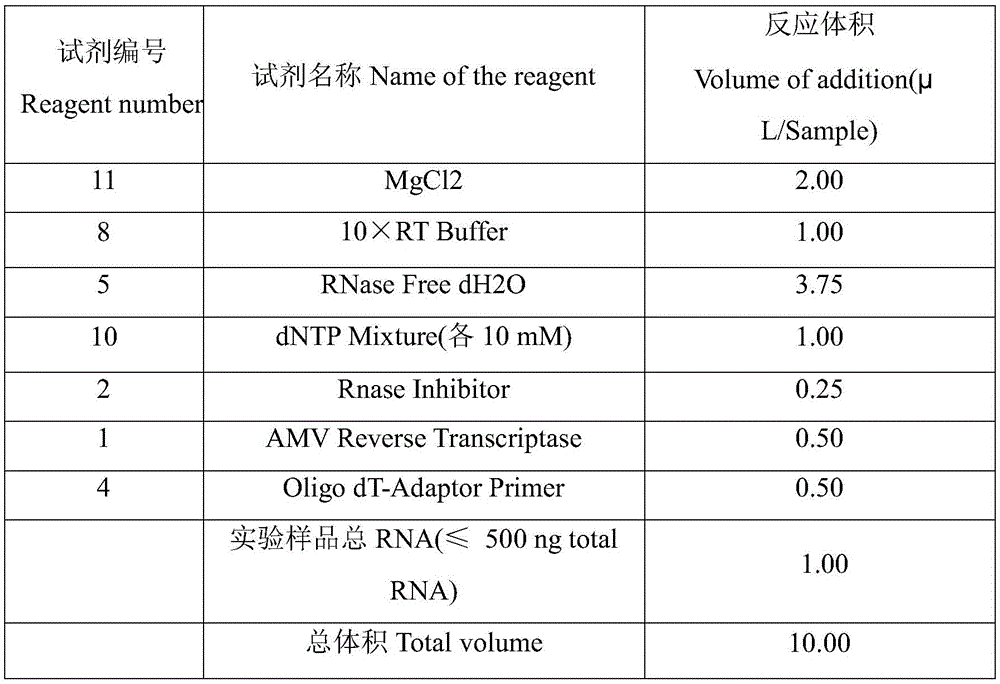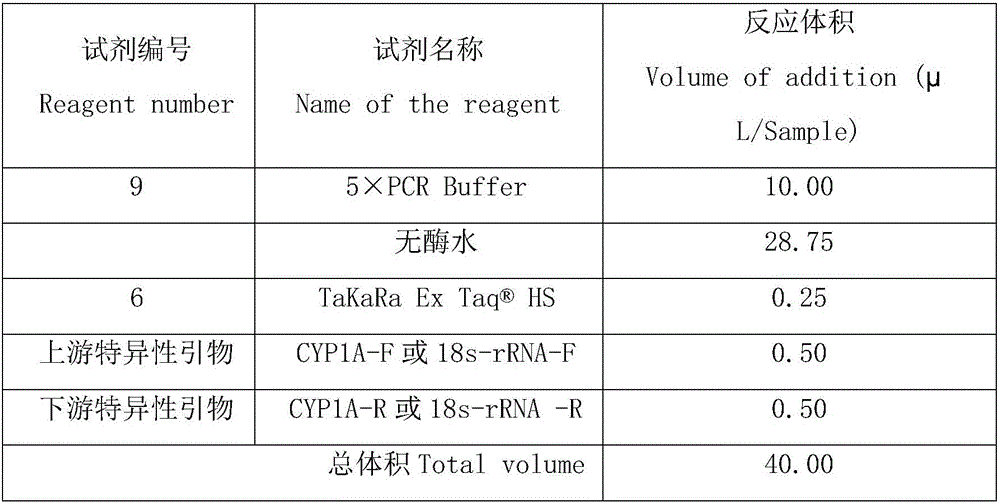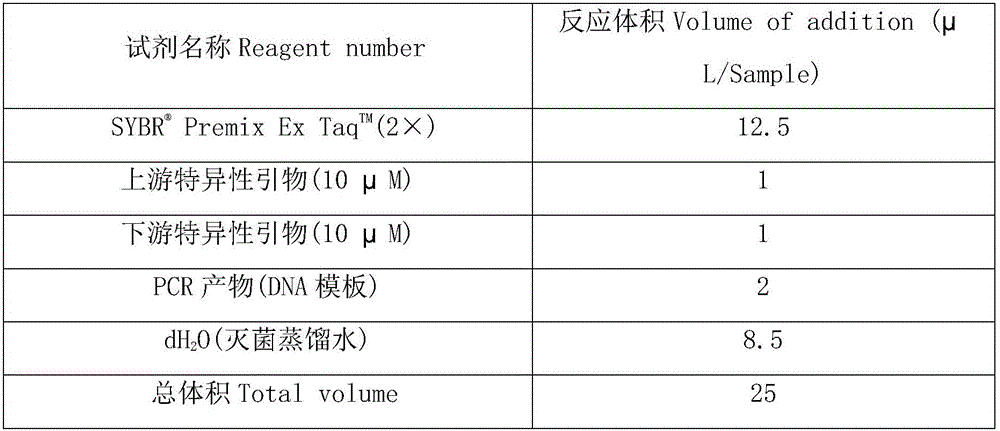Method for monitoring phenanthrene pollution in water through gene CYP1A
A water pollution and genetic technology, applied in the field of water pollution monitoring, can solve the problems of inability to detect the hazard and the degree of hazard.
- Summary
- Abstract
- Description
- Claims
- Application Information
AI Technical Summary
Problems solved by technology
Method used
Image
Examples
Embodiment 1
[0030] (1) Breeding preparation of biological samples of water-polluted fish
[0031] Use 10-day-old seawater medaka larvae as biological samples for monitoring water pollution, divide the larvae into 6 groups, and raise them respectively in the water environment with a concentration of phenanthrene as described in Table 1, wherein the larvae of 0 concentration are used as the control group, and 3 in each group are carried out in parallel After feeding for 7 days, 3 fish samples were taken in parallel for measurement, and 3×3=9 data were measured for each group, and the relative expression level results of the CYP1A gene of each group of fish were obtained after mathematical statistics of the 9 data for each group. :
[0032] Table 1 The concentration of phenanthrene in the waters where the larvae of the 6 groups were reared
[0033] Experiment number
control group
1
2
3
4
5
Phenanthrene concentration (μg / L)
0
250
500
750
100...
Embodiment 2
[0082] 1. Breeding preparation of water-polluted fish biological samples
[0083] Seawater medaka larvae were used as biological samples for monitoring water pollution, and the larvae were divided into two groups. These two groups were divided into the non-pollution control group and the water area group to be tested. The larvae were raised in the non-polluted water body and the water area to be tested, Three parallels were carried out in each group, and 3 fish samples were randomly taken from each parallel for measurement after 7 days, and 3x3=9 data were measured in each group, and the results of each group of fish were obtained after mathematical statistics of the 9 data in each group. .
[0084] 2. According to the grouping, use the RNA extraction reagent to extract the total RNA of the fish sample, and use the reverse transcription reagent to reverse transcribe the RNA to synthesize the first-strand cDNA;
[0085] (1) Quickly weigh about 100 mg of frozen larvae, record t...
PUM
 Login to View More
Login to View More Abstract
Description
Claims
Application Information
 Login to View More
Login to View More - R&D
- Intellectual Property
- Life Sciences
- Materials
- Tech Scout
- Unparalleled Data Quality
- Higher Quality Content
- 60% Fewer Hallucinations
Browse by: Latest US Patents, China's latest patents, Technical Efficacy Thesaurus, Application Domain, Technology Topic, Popular Technical Reports.
© 2025 PatSnap. All rights reserved.Legal|Privacy policy|Modern Slavery Act Transparency Statement|Sitemap|About US| Contact US: help@patsnap.com



